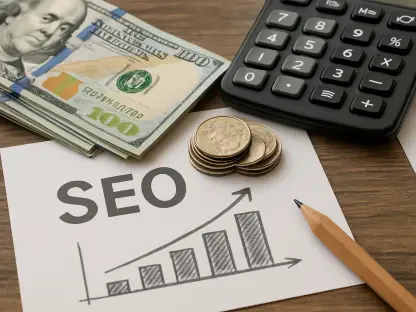In today’s rapidly changing markets, brands are confronted with a myriad of challenges, ranging from unpredictable economic shifts to geopolitical uncertainties. These factors significantly impact consumer behavior, forcing brands to reevaluate traditional advertising strategies. Amid such volatility, programmatic out-of-home (OOH) advertising emerges as a stabilizing force, offering brands unparalleled flexibility and control over their campaigns. This advanced advertising approach allows marketers to adapt in real time, making it especially advantageous in regions with complex markets like Southeast Asia. By harnessing the capabilities of programmatic OOH, brands can maintain their relevance and achieve desired outcomes, even when market conditions are unpredictable.
The Advantages of Programmatic OOH
Flexibility and Real-Time Adaptation
Programmatic OOH advertising provides marketers with a dynamic platform that enables real-time adjustments to campaigns, an invaluable feature in a market landscape vulnerable to abrupt shifts. Adopting programmatic OOH means brands can promptly respond to external factors, such as changes in weather, consumer trends, or economic data, by altering messaging and strategy instantaneously. This level of adaptability is particularly beneficial for brands operating in unpredictable markets, where nimble marketing tactics can lead to stronger consumer engagement and enhanced results. Retailers, for example, can quickly roll out flash sales in response to shopping season trends, ensuring they capture consumer interest effectively.
Additionally, programmatic OOH provides flexibility to shift resources and priorities, allowing brands to maximize their advertising impact without exceeding budgets. By allocating resources strategically based on real-time data, marketers can prioritize high-impact opportunities and optimize campaign reach. This approach stands in stark contrast to traditional advertising models, where commitments must be made well in advance, often leading to inefficiencies if market conditions change rapidly. A beverage company might adjust its promotions in response to unexpected heatwaves, tapping into weather-driven consumer needs more efficiently than static campaigns allow. Thus, programmatic OOH empowers brands with the agility needed to pursue optimal engagement and return on investment (ROI).
Tailoring Messages for Impact
In addition to real-time flexibility, programmatic OOH excels in enabling brands to craft tailored messages that resonate powerfully with target audiences. By leveraging data-driven insights, marketers can pinpoint consumer preferences and behaviors, crafting campaigns that speak directly to these insights. This precision in messaging is crucial, especially amid diverse urban environments where consumer habits can vary widely. For example, travel companies can customize advertisements that highlight family-friendly vacation packages during school holiday seasons, engaging specific audience segments effectively. Such strategic targeting enhances the emotional appeal and relevance of brand communications, fostering stronger consumer connections.
The capacity to tailor messages extends to leveraging contextual factors, such as location and timing, to achieve maximum impact. Whether addressing commuters in transit zones or targeting shoppers near retail hubs, programmatic OOH ensures that messages appear in environments that align with consumer activities. This contextual alignment reinforces the relevance of brand messaging, enhancing consumer recall and response rates. The inclusion of digital elements, such as QR codes or interactive displays, can further enrich consumer interactions, providing seamless engagement opportunities that blend physical and digital touchpoints. Thus, the versatile nature of programmatic OOH ensures brands can maintain visibility and engagement amidst complex market dynamics.
Measurability and Market Dynamics
Enhanced Accountability with Data-Driven Insights
One significant advantage of programmatic OOH is its robust accountability, using data-driven metrics to provide transparent insights into campaign performance. Contrary to misconceptions about out-of-home advertising, programmatic strategies utilize sophisticated tools to monitor audience interactions, providing detailed reports on impressions, demographic reach, and consumer engagement. These insights enable marketers to tailor campaigns more effectively, identifying which messages resonate best with key demographics and making informed decisions about campaign evolution. Enhanced measurement fosters greater confidence in programmatic OOH, establishing it as a reliable component of the modern marketing toolkit.
Moreover, programmatic OOH platforms incorporate third-party studies and anonymized mobility data to offer insights about foot traffic and consumer behavior. This level of measurement is crucial for understanding campaign impacts in real time, enabling brands to fine-tune their strategies with precision. Retail centers, galleries, and entertainment venues can employ these insights to target prospective visitors, driving foot traffic and elevating the consumer experience. As a result, brands gain a comprehensive view of how their advertisements influence consumer actions, furnishing them with verifiable ROI that underlines the strategic effectiveness of programmatic OOH.
Market Trends Amid Digital Fragmentation
As digital platforms strive to capture audience attention in an increasingly fragmented media landscape, programmatic OOH provides a solution that combines emotional engagement with transactional proximity. While online channels grapple with transparency and algorithmic challenges, outdoor environments inherently offer authentic connections in physical spaces. Despite the convenience of digital media, real-world interactions facilitate brand authenticity, driving consumer trust and loyalty. For instance, event-based advertising at festivals or sports arenas creates memorable experiences, heightening brand recall and consumer affinity, setting a foundation for long-term relationships.
The accessibility of programmatic OOH in public spaces also enables brands to capitalize on consistent foot traffic, reinforcing their presence across various consumer touchpoints. In bustling markets, shopping centers, and transit stations, brands encounter consistently engaging audiences, centering campaigns around consumers’ daily lives. This alignment with behavior patterns ensures sustained engagement, nurturing connections across consumer journeys. Marketers can thus construct seamless brand experiences that integrate with and enrich everyday interactions, bridging the gap left by digital media’s sometimes impersonal nature.
A Forward-Looking Strategy
Strategic Imperatives for Brand Success
The overarching consensus is clear: in times of market duress, brands that strategically invest in adaptable and data-driven channels like programmatic OOH are better positioned for success. Instead of retracting during downturns, these brands capitalize on opportunities for visibility, refining strategies continuously as new insights emerge. This proactive approach highlights the importance of agility in safeguarding brand presence while driving meaningful engagement. For those looking to maintain market relevance, embracing programmatic OOH as a core element of advertising strategies becomes not merely optional but essential.
Furthermore, the capability of programmatic OOH to link return metrics with consumer behavior underscores its pivotal role in a comprehensive marketing strategy. By prioritizing real-world interactions, brands tap into authentic relationships curated in tangible environments, helping to bridge digital divides. Looking ahead, brands must define clear objectives for their programmatic OOH campaigns, ensuring alignment with broader marketing goals and maximizing impact. The emphasis on clear, actionable insights facilitates strategic agility, transforming insights into informed actions that drive brand growth effectively.
Sustaining Stability and Growth
In the fast-paced world of today’s markets, brands face an array of challenges, from sudden economic swings to geopolitical uncertainties. These elements play a crucial role in shaping consumer behavior, pushing brands to reassess long-standing advertising approaches. During times of such turmoil, programmatic out-of-home (OOH) advertising stands out as a stabilizing tool, granting brands exceptional flexibility and control over their promotions. This sophisticated advertising method enables marketers to adjust their strategies in real time, proving especially beneficial in regions with intricate markets, such as Southeast Asia. By leveraging the strengths of programmatic OOH, brands can effectively maintain their relevance and achieve their objectives, even when market conditions are unpredictable. This adaptive approach not only supports brands’ resilience in challenging environments but also equips them with tools to swiftly respond to changes, fostering agility and sustained consumer engagement amidst constant fluctuations.









